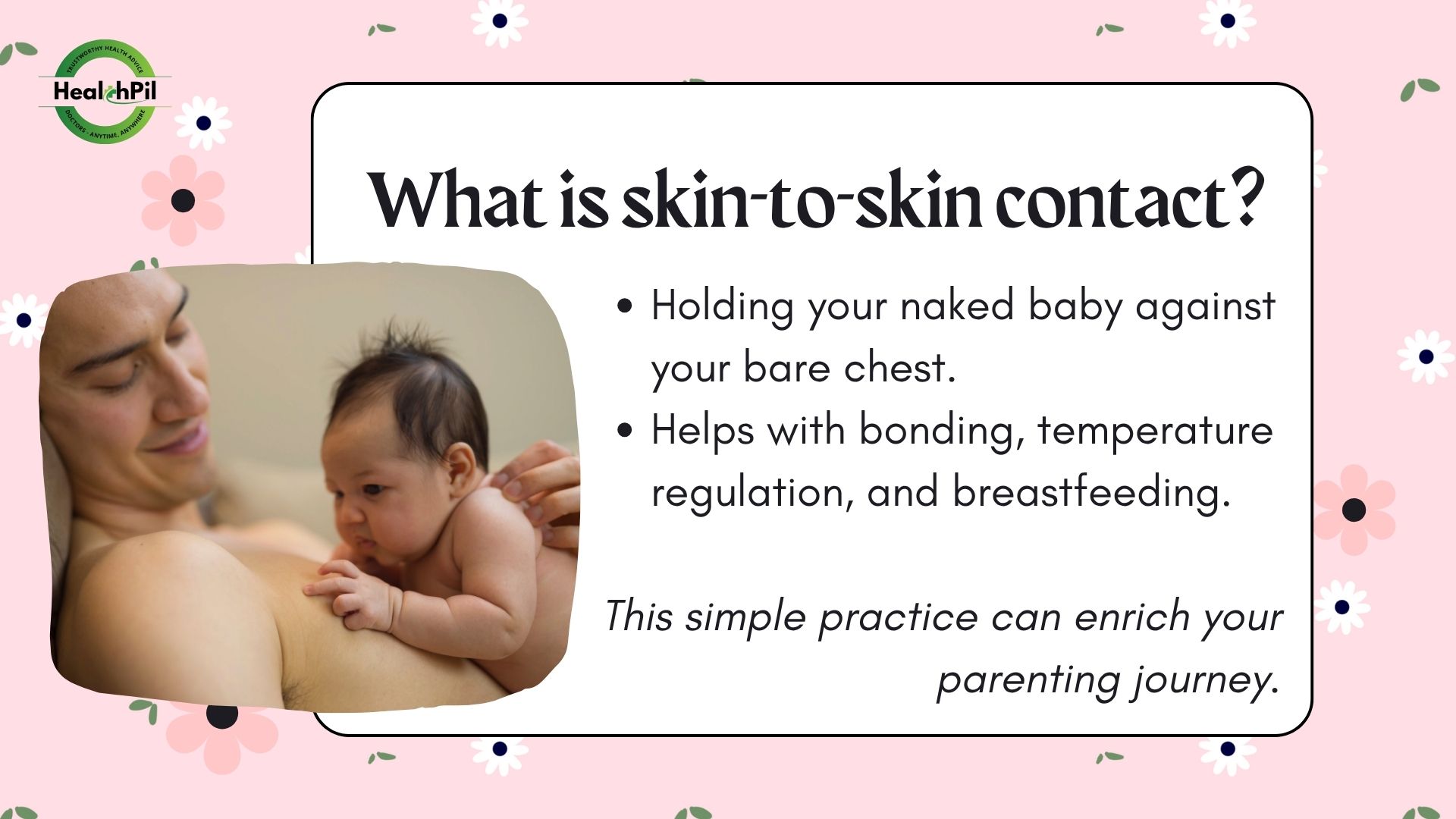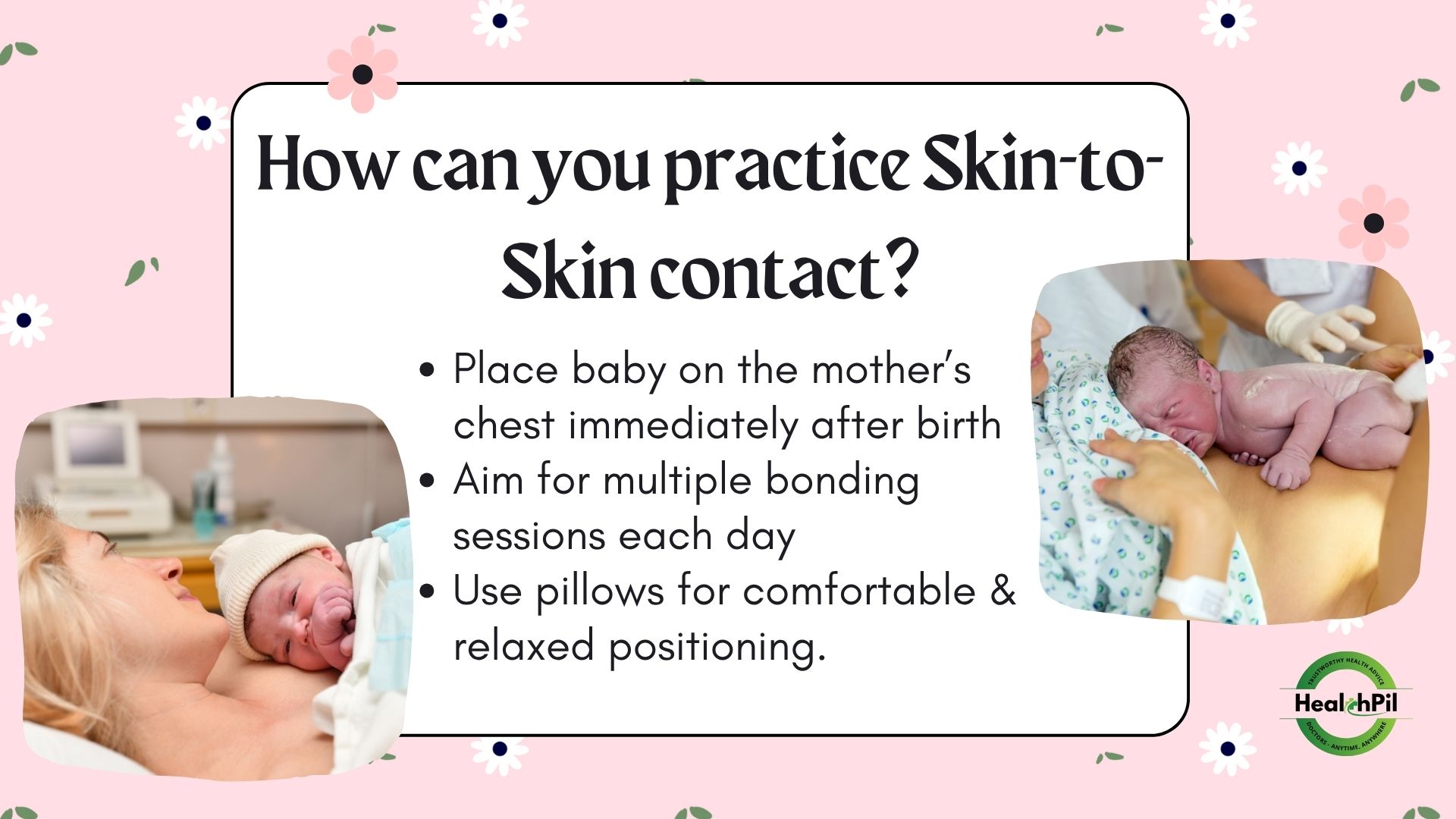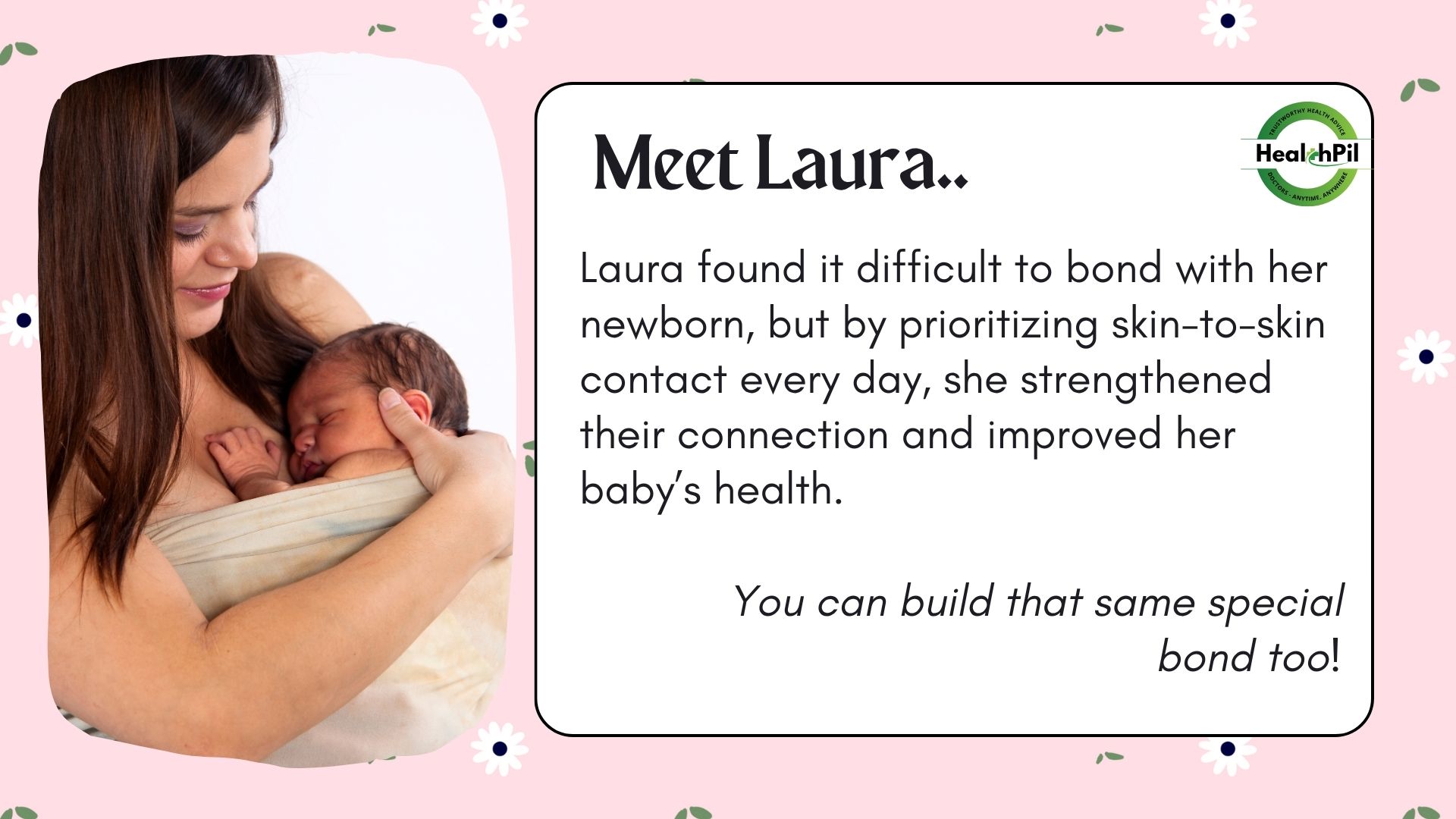





The Incredible benefits of Skin-to-Skin Contact with Your Newborn
Skin-to-skin contact, also known as kangaroo care, is a practice where the baby is held against the bare chest of a parent. This simple but powerful practice brings so many benefits, not just for your newborn, but for you as a parent too. This article explores the importance of skin-to-skin contact and how to incorporate it into your daily routine.
What is Skin-to-Skin Contact?
Skin-to-skin contact involves placing your naked baby on your bare chest immediately after birth and continuing this practice in the days and weeks that follow. It helps facilitate bonding, regulate the baby’s body temperature, and promote breastfeeding.
Benefits of Skin-to-Skin Contact
● Physical closeness fosters emotional connection, allowing parents to establish a strong bond with their newborn.
● Skin-to-skin contact helps stabilize the baby’s body temperature, keeping them warm and comfortable.
● Babies who experience skin-to-skin contact are more likely to breastfeed successfully and for longer durations, as it encourages natural breastfeeding instincts.
● This practice lowers cortisol levels in both the mother and baby, promoting relaxation and reducing stress.
● Studies have shown that babies who receive skin-to-skin contact have better weight gain, lower risk of infections, and improved overall health.
How to Practice Skin-to-Skin Contact
● After delivery, place the baby on the mother’s bare chest, ideally within the first hour of life, while ensuring a warm environment.
● Continue skin-to-skin contact during the hospital stay and at home. Aim for several sessions throughout the day.
● Find a comfortable position for both you and your baby. You can sit or lie down, using pillows for support.
● Ensure the environment is calm, with dim lighting and minimal noise to facilitate bonding.
Frequently Asked Questions
Can I practice skin-to-skin contact if I had a C-section?
Yes, skin-to-skin contact can be initiated in the operating room if the mother’s condition allows it.
How long should skin-to-skin contact last?
Aim for at least 30 minutes per session, but longer durations are encouraged whenever possible.
What if my baby doesn’t want to be held skin-to-skin?
If your baby shows signs of discomfort, try again later. Every baby is different, and they may take time to adjust.
Can dads also practice skin-to-skin contact?
Absolutely! Dads can and should participate in skin-to-skin contact to foster bonding.
What should I wear during skin-to-skin contact?
A loose-fitting shirt or a specially designed skin-to-skin shirt can be helpful to keep your baby close.
Conclusion
Skin-to-skin contact is a simple yet powerful practice that can significantly benefit both parents and their newborns. By prioritizing this bonding time, parents can enhance their baby’s health and well-being while fostering a strong emotional connection. Remember, every moment spent in close contact with your baby counts!
Disclaimer
The information provided in this article is for awareness purposes only and should not replace professional medical advice. Always consult your healthcare provider for personalized medical guidance.
How HealthPil can help?
HealthPil Is Always Here for YOU!
● Need Guidance? Connect with healthcare experts ready to help you navigate gestational diabetes.
● Join Our Community: Gain access to tips, resources, and support from mothers just like you!
● Don’t Delay—Take Action! Your health and your baby’s future are too important to wait!
Contact HealthPil today and empower your pregnancy journey!
